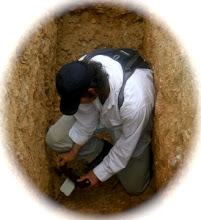 What is the Sound of Opening Stomata?
What is the Sound of Opening Stomata?We’ve heard the rhetoric question from the sage on the mountain asking what is the sound of one hand clapping. What about the sound of stomata popping? Does this correlate to a real world question in the daily life of phototrophic organisms? Every day at dawn, if we were to listen very carefully we could hear an audible pop echoing throughout the Delaware Valley…
It’s partly driven by a light reaction that causes the radial mycelation of a turgid guard cell. In other words, when the sun rises the stomate opens and we’re ready for business. Let the carbon-fixation begin!
At sunset, the reverse occurs, and the kidney-shaped guard cell sadly becomes flaccid and closes for the night. Please bear in mind that when you’re in the desert, the opposite occurs with CAM plants, which fix carbon at night to reduce the inevitable water loss that occurs every time a stomate opens, operating with a transpiration ratio of 50. However with C3 plants, the transpiration ratio is close to 500, meaning that for every 500 molecules of water lost, only 1 molecule of CO2 is fixed. Talk about 2 steps backward for every 1 step forward!
Ever wonder why Hairy Vetch is so hairy? The trichomes (or plant hairs, affectionately known as pubescence) effectively reduce evapotranspiration, while simultaneously keeping CO2 in place. One of the reasons the transpiration ratio is so great is because generally the CO2 content in the atmosphere is approximately 0.03%, while the water content inside the vacuole of the plant is approximately 2.5%. In addition, CO2 encounters resistance when crossing various membranes. This, coupled with the fact that the CO2 molecule is about 1.6 times larger than the water molecule, really makes it a bad hair day for the misunderstood CO2 molecule. Nobody seems to care about all the trouble he goes to. And he’s not even close to the Calvin Cycle yet…
So what exactly drives this mysteriously unerring opening and closing? Stay tuned next issue and we’ll talk about mineral nutrition, and the wonderful role of the Potassium ion flux of guard cells, inducing electrolytic tendencies, driving hydrolysis of ATP, thereby extruding protons to alter pH, and providing a passive chemical diffusion gradient. Waiter, may I have another helping of sulfate of potash?

No comments:
Post a Comment